The Arctic Economy
The Arctic is rapidly evolving from a remote, frozen frontier into a region of profound economic significance. Once considered inaccessible for large-scale commercial activity, it is now drawing increased global attention due to the emergence of new trade corridors and untapped resource potential. This transformation is opening the door to a wide array of economic opportunities, including more efficient trade routes, natural resource extraction, and infrastructure development.
As climate change reduces the extent and duration of sea ice, previously impassable maritime routes—such as the Northern Sea Route and the Northwest Passage—are becoming seasonally navigable. These shorter shipping lanes between Europe, Asia, and North America offer the promise of reduced transit times, lower fuel costs, and alternative supply chain solutions that could significantly reshape global logistics and trade patterns.
The Arctic holds vast reserves of natural resources, including oil, natural gas, rare earth minerals, and fisheries—many of which remain underexplored or underutilized due to historic inaccessibility. For businesses and investors, these reserves represent a frontier of potential growth, particularly as geopolitical interest and technological innovation converge to make Arctic operations more viable.
Beyond extraction, the demand for supporting infrastructure—such as ports, telecommunications, energy systems, and transportation networks—presents a compelling case for long-term capital investment. Those who establish a foothold now stand to benefit from first-mover advantages, gaining influence over the infrastructure, supply chains, and standards that will shape the region’s economic future.
However, unlocking the Arctic’s economic potential comes with considerable challenges. Environmental risks, the need for Indigenous consultation, legal uncertainties, and the logistical complexity of operating in extreme conditions all require thoughtful navigation. Successful Arctic investment will depend not only on capital and technology but on a collaborative approach that respects ecological limits, embraces innovation, and promotes inclusive governance. These expanding opportunities are complicated by increasing government interest, regulatory frameworks, and international cooperation aimed at managing development responsibly and sustainably.
In this context, the Arctic is no longer a passive backdrop to global change—it is an active and increasingly central arena for economic, political, and environmental decision-making. For forward-looking businesses, policymakers, and investors, engaging with the Arctic economy is both a strategic imperative and an opportunity to shape the future of a region on the cusp of transformation.
The Future of Arctic Trade and Investments
The Arctic is swiftly transitioning from a peripheral frontier to a pivotal arena in the evolving global economy. With its emerging maritime corridors, growing commercial interest, and expanding regional markets, the Arctic is increasingly seen not just as a geographic threshold, but as a strategic crossroads for trade, investment, and innovation. As ice coverage continues to recede due to climate change, navigability in the region is improving, opening up once-forbidding trade routes like the Northern Sea Route and the Northwest Passage. These corridors promise to shorten shipping times between major global markets, reduce transportation costs, and offer alternative pathways in an increasingly congested and geopolitically complex world.
For businesses and investors, the Arctic presents a rare opportunity to engage early in a region undergoing fundamental transformation. Those who establish a foothold now stand to benefit from first-mover advantages, gaining influence over the infrastructure, supply chains, and standards that will shape the region’s economic future. From port development and logistics networks to energy exploration, telecommunications, and cold-climate innovation, a wide range of sectors are poised for long-term growth.
The Arctic’s strategic value lies not only in its geography but in its resources. It is home to vast reserves of oil, gas, critical minerals, and seafood, much of which remains underdeveloped. At the same time, growing interest in Arctic tourism, scientific research, and clean energy development reflects the region’s multifaceted economic potential. These expanding opportunities are complemented by increasing government interest, regulatory frameworks, and international cooperation aimed at managing development responsibly and sustainably.
Crucially, the success of Arctic trade and investment will depend on more than infrastructure and capital. It will require inclusive governance models that respect Indigenous rights, preserve fragile ecosystems, and ensure that economic benefits are equitably distributed. The Arctic’s unique environmental and cultural landscape must be protected, even as the region opens to global commerce.
Looking ahead, the Arctic is positioned to play a defining role in the next era of global trade. For visionary stakeholders—whether in business, finance, or policy—this is a moment to lead. By investing in Arctic infrastructure, forging resilient partnerships, and embracing innovation tailored to northern realities, they can help shape a new chapter in global economic development. The Arctic is no longer on the edge of the map; it is on the edge of what’s next.
Arctic Trade Routes
A New Frontier in Global Commerce
The Arctic’s emerging trade routes are drawing increasing global attention for their potential to reshape the future of international shipping and logistics. As climate change continues to diminish the extent and thickness of sea ice, once-impenetrable Arctic passages are becoming seasonally accessible—and, in some areas, navigable for longer periods each year.
These developing maritime corridors offer more direct links between major economic hubs, particularly between Asia and Europe. By shortening transit distances, Arctic routes could significantly reduce shipping times, fuel consumption, and operational costs. In doing so, they present a compelling opportunity to enhance the efficiency and sustainability of global trade. They also raise new strategic and environmental considerations for the international maritime community.
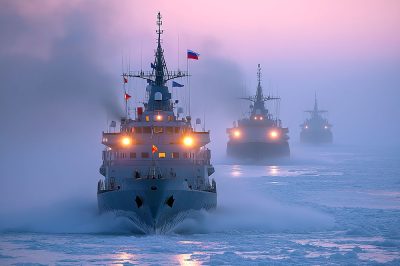
Reduced Shipping Distances and Times
One of the most compelling benefits of Arctic shipping routes is the reduction in both travel distances and times. Compared to traditional routes, which often involve lengthy detours around continents, Arctic passages can shorten journeys by thousands of miles. This reduction in distance leads to faster delivery times, enabling goods to reach their destinations more quickly, which is particularly important for time-sensitive shipments. The time savings also mean that vessels can complete more voyages per year, increasing their overall profitability.
Fuel Efficiency and Cost Savings
Shorter travel distances directly result in fuel cost savings. Since fuel consumption is largely dependent on the distance traveled, using Arctic trade routes can significantly lower the amount of fuel needed for a journey. This reduction in fuel consumption not only results in cost savings for shipping companies but also helps lower operational costs across the industry. Additionally, as the shipping industry faces growing pressure to meet international climate goals, the Arctic route’s improved fuel efficiency could provide a dual advantage by conserving fuel and reducing emissions by shorter routes or through slow steaming.
Navigational and Operational Challenges
Despite its promise, the Arctic remains one of the harshest and least predictable environments on Earth. Sudden weather shifts, residual ice hazards, and limited search-and-rescue infrastructure all complicate Arctic navigation. Thus, Arctic shipping routes present unique navigational and operational challenges. Shipping companies would need to invest in ice-strengthened vessels or icebreakers to safely navigate the passage, particularly in areas where ice is still present even in the summer months. Additionally, specialized navigation systems and trained crews would be necessary to handle the challenges posed by the unpredictable Arctic environment. Additionally, Arctic routes remain seasonal and the need for specialized equipment further complicates the use of these routes for consistent trade. Shipping companies would need to carefully plan routes and invest in technologies and infrastructure to support operations in the Arctic.
Environmental Impacts
While Arctic shipping routes offer economic advantages, there are also environmental challenges that need to be addressed. The region is home to fragile ecosystems, and increased shipping traffic could disturb these areas, with potential impacts on wildlife, local communities, and the climate. For instance, shipping in the Arctic increases the risk of oil spills, which can have devastating consequences in a region where response capabilities are limited. Moreover, shipping emissions, such as black carbon, could contribute to the accelerated melting of Arctic Sea ice, exacerbating the region’s environmental challenges.
Technological and Infrastructure Investments
To fully realize the benefits of Arctic shipping, significant investments in both technology and infrastructure are required. Vessels must be equipped to handle the harsh conditions of the Arctic, including ice-strengthened hulls and specialized navigation systems. Furthermore, the Arctic lacks the infrastructure of more traditional shipping routes, with fewer ports, limited fuel stations, and inadequate search-and-rescue capabilities. Investments in building infrastructure, such as new ports, icebreakers, and better monitoring systems, will be essential to support the growth of Arctic trade.
Geopolitical Considerations
The region’s strategic geopolitical importance is prompting Arctic and non-Arctic nations alike to pursue economic partnerships, regulatory frameworks, and research collaborations aimed at managing growth sustainably and equitably. Countries bordering the Arctic Ocean are also undergoing territorial disputes with each other, adding an additional layer of complexity.
The Northern Sea Route
The Northern Sea Route (NSR) runs along the northern coastline of Russia and represents a promising new pathway for global trade. This route connects Europe and Asia, significantly shortening shipping distances and reducing transit times when compared to traditional routes, such as those passing through the Suez Canal. For many global trade routes, the NSR could offer a reduction in travel times of up to 40%, which could revolutionize logistics, enhance supply chain efficiency, and reduce operational costs.
The potential for the NSR to become a year-round shipping route depends largely on the region’s ice coverage. Currently, the route is navigable primarily during the summer and early autumn months when ice conditions are more favorable. However, as global temperatures rise, the ice-free period in the Arctic is expected to lengthen, which would make the NSR accessible for longer periods each year. This is crucial for businesses that rely on predictable shipping schedules, as extended open-water periods could help stabilize operations along the route.
The Northern Sea Route (NSR) and the Northeast Passage (NEP) are often used interchangeably, but they refer to slightly different concepts. The NSR is a specific segment of the Arctic shipping route that lies within Russia’s Exclusive Economic Zone, stretching from the Kara Sea near Novaya Zemlya to the Bering Strait. It is subject to Russian jurisdiction, including regulations on navigation and icebreaker assistance. In contrast, the NEP is a broader geographical term that encompasses the entire route along the northern coast of Eurasia, from the Atlantic Ocean to the Pacific, and includes the NSR as well as other parts that may lie outside Russian territorial waters. Essentially, the NSR is a part of the NEP, focused on the Russian-administered portion of the Arctic passage.
Time and Distance Reductions
One of the primary advantages of the NSR is its ability to cut down the time and distance between major economic hubs. Traditional maritime routes often involve long detours around continents, adding significant travel time. In contrast, the NSR provides a more direct connection, reducing shipping distances by thousands of miles. This not only decreases the overall time for shipments to reach their destinations but also allows vessels to complete more voyages per year, boosting the efficiency of the global shipping industry.
Fuel Efficiency and Cost Savings
Shorter distances and reduced travel times lead to lower fuel consumption. With less fuel required for each trip, shipping companies can significantly cut their operating costs. In addition, the directness of the NSR route means ships can potentially operate at slower speeds, conserving even more fuel and contributing to reduced emissions. These savings, both in terms of fuel and time, make the NSR an attractive option for businesses looking to optimize logistics and reduce overhead costs.
Environmental Considerations
While the Arctic’s opening up as a shipping route offers clear economic advantages, it also raises concerns about the region’s fragile environment. Increased shipping traffic in the Arctic could pose risks to local ecosystems, including the potential for oil spills and disturbances to wildlife. The Arctic is already experiencing rapid changes due to climate change, and further environmental stress from shipping could exacerbate these effects. As such, any expansion of the NSR will require careful consideration of environmental impacts, along with efforts to implement sustainable and responsible shipping practices.
Impact of Warming and Seasonal Navigation
The potential for the NSR to become a year-round shipping route depends largely on the region’s ice coverage. Currently, the route is navigable primarily during the summer and early autumn months when ice conditions are more favorable. However, as global temperatures rise, the ice-free period in the Arctic is expected to lengthen, which would make the NSR accessible for longer periods each year. This is crucial for businesses that rely on predictable shipping schedules, as extended open-water periods could help stabilize operations along the route.
Infrastructure and Technological Needs
The development of the NSR as a major global trade route requires significant investment in infrastructure and technology. Arctic shipping demands specialized vessels, such as icebreakers or ships with reinforced hulls, to navigate the region safely. Additionally, the lack of extensive port infrastructure and logistics facilities in the Arctic will need to be addressed to accommodate growing shipping traffic. Investments in technology for navigation, safety, and environmental monitoring will also be necessary to ensure the route is both efficient and secure.
Northern Sea Lanes
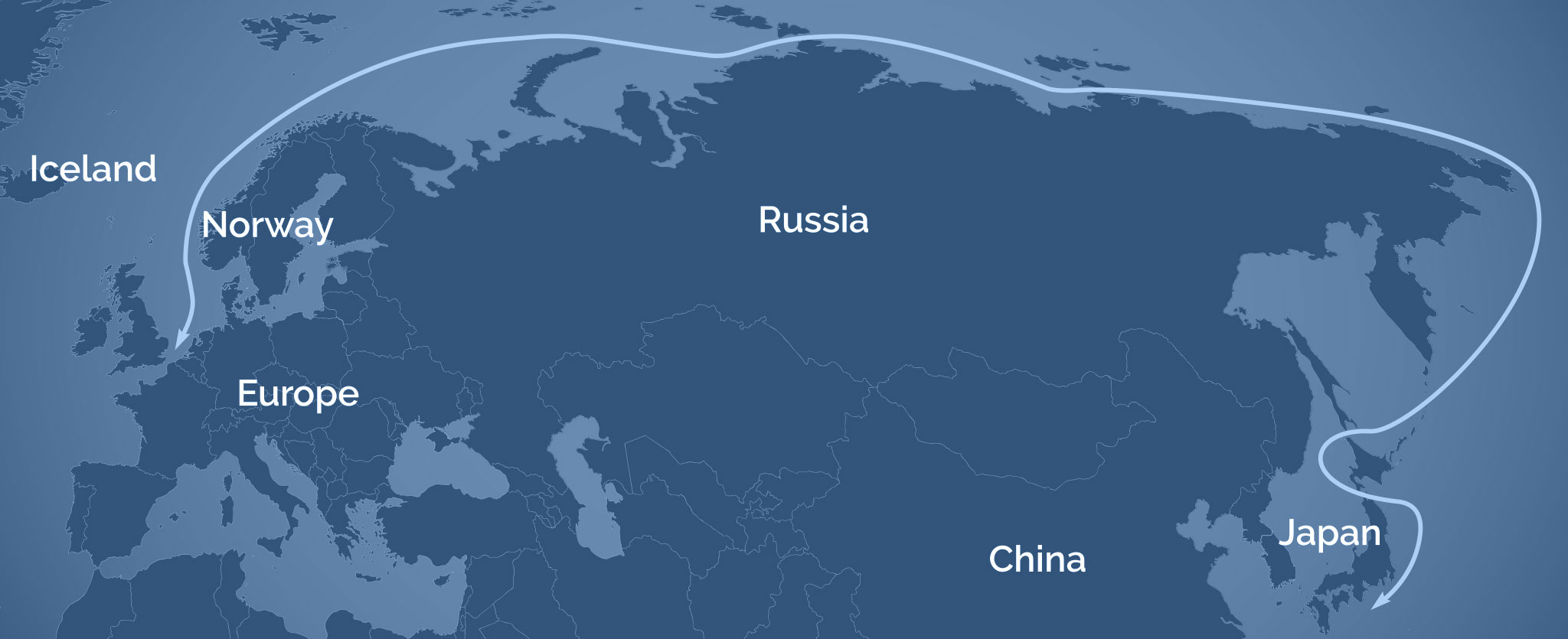
Northeast Passage (NEP)
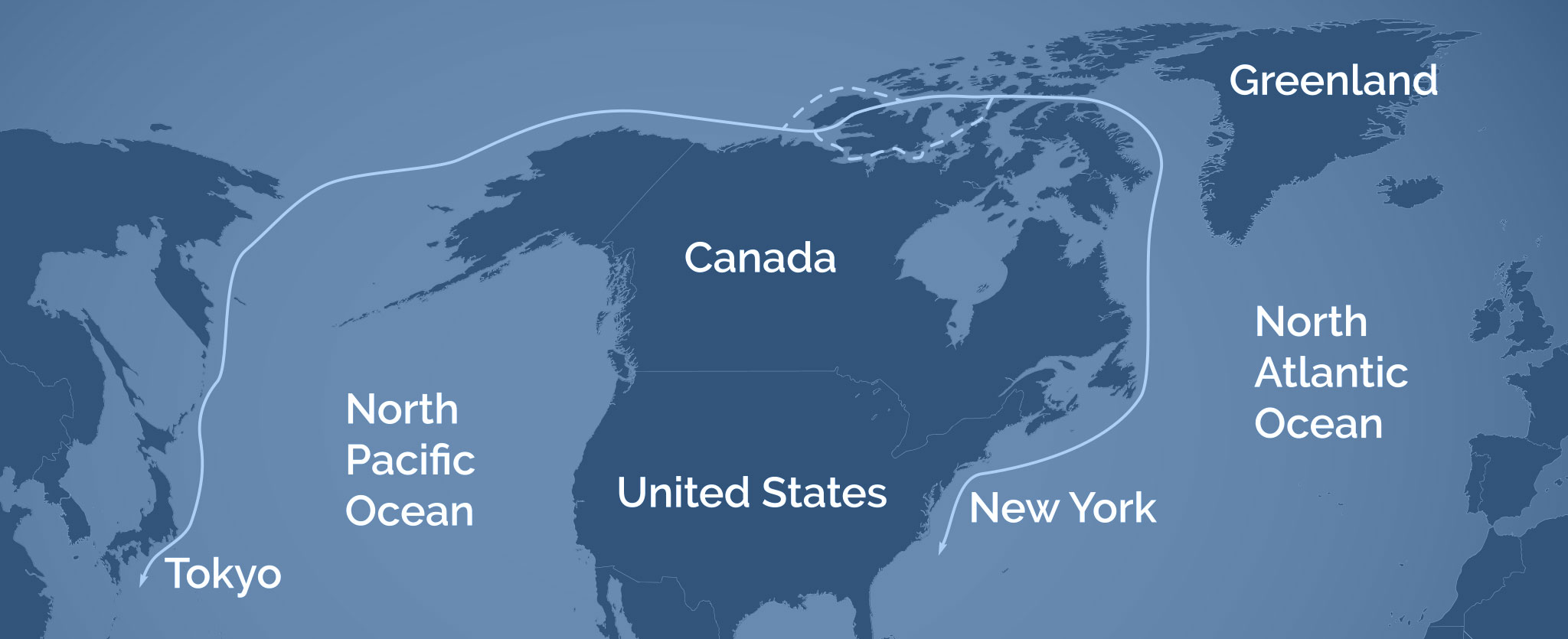
Northwest Passage (NWP)
The Northeast Passage
The Northeast Passage (NEP) is a sea route that follows the northern coast of Eurasia, connecting the Atlantic and Pacific Oceans via the Arctic Ocean. Historically, the NEP was largely inaccessible due to extensive and persistent sea ice, making it impractical for regular commercial use. However, as climate change accelerates Arctic warming, sea ice coverage has been diminishing, particularly during the summer months, making the route increasingly navigable. This development has opened new opportunities for global shipping by offering a significantly shorter alternative to traditional routes such as the Suez Canal. While the NEP holds the potential to reduce transit times and fuel costs, challenges remain, including harsh weather conditions, limited infrastructure, and complex jurisdictional considerations, especially along the Russian-administered Northern Sea Route segment.
The Northern Sea Route
The Northern Sea Route (NSR) and the Northeast Passage (NEP) are often used interchangeably, but they refer to slightly different concepts. The NSR is a specific segment of the Arctic shipping route that lies within Russia’s Exclusive Economic Zone, stretching from the Kara Sea near Novaya Zemlya to the Bering Strait. It is subject to Russian jurisdiction, including regulations on navigation and icebreaker assistance. In contrast, the NEP is a broader geographical term that encompasses the entire route along the northern coast of Eurasia, from the Atlantic Ocean to the Pacific, and includes the NSR as well as other parts that may lie outside Russian territorial waters. Essentially, the NSR is a part of the NEP, focused on the Russian-administered portion of the Arctic passage.
The Northwest Passage
The Northwest Passage (NWP) is a sea route that cuts through Canada’s Arctic Archipelago, providing a more direct connection between the Atlantic and Pacific Oceans. Historically, the NWP has been blocked by thick sea ice, making it impassable for much of the year. However, due to the effects of climate change and the warming of the Arctic, the route is becoming more navigable, especially during the summer months when sea ice recedes. This shift opens up new possibilities for global shipping, offering the potential to reduce shipping costs and time significantly.
Time and Distance Reduction
One of the most significant advantages of the Northwest Passage is the reduction in both travel time and shipping distance. Traditional maritime routes between the Atlantic and Pacific Oceans involve long detours around the southern tip of South America, or passing through the Panama Canal. The NWP, however, provides a much more direct route through the Arctic Archipelago, potentially shortening the journey by thousands of miles. For example, trans-Pacific voyages could be shortened by over 7,000 kilometers when using the NWP, allowing ships to reach their destinations faster.
This reduction in distance doesn’t just save time; it also means fewer fuel costs, making the route an attractive option for shipping companies looking to optimize their operations.
Fuel Efficiency and Cost Savings
Shorter travel distances and reduced transit times translate into lower fuel consumption for vessels. The amount of fuel used in maritime shipping is directly tied to the distance traveled, so a more direct route like the NWP offers substantial fuel savings. These savings could be particularly beneficial given the rising costs of fuel and increasing pressure on shipping companies to reduce their carbon footprints.
Additionally, the ability to reduce fuel consumption not only helps save money but also reduces the environmental impact of shipping, making the NWP a more sustainable alternative for global trade.
Environmental Considerations
While the NWP offers economic benefits, it also comes with environmental challenges. The Arctic is a sensitive and fragile ecosystem, and increased shipping activity could potentially disrupt local wildlife and ecosystems. The risk of oil spills, for instance, is more concerning in the Arctic because of the region’s remoteness and limited ability to conduct cleanup operations in the event of a spill. Additionally, the opening of the NWP could lead to greater carbon emissions in the region, especially if shipping companies rely on traditional heavy fuel oils.
Moreover, the NWP is still a seasonally navigable route, typically only open during the summer months when sea ice is at its minimum. This seasonality means that the route is not yet a reliable year-round option for consistent trade, which presents logistical challenges for businesses that rely on predictable shipping schedules.
Navigational and Operational Challenges
The NWP presents some unique navigational and operational challenges due to its ice-covered waters and complex network of channels and straits. Shipping companies would need to invest in ice-strengthened vessels or icebreakers to safely navigate the passage, particularly in areas where ice is still present even in the summer months. Additionally, specialized navigation systems and trained crews would be necessary to handle the challenges posed by the unpredictable Arctic environment.
The route’s seasonality and the need for specialized equipment further complicate the use of the NWP for consistent trade. Shipping companies would need to carefully plan routes and invest in technologies and infrastructure to support operations in the Arctic.
Commercial Interest and Future Potential
Despite these challenges, there is growing commercial interest in the NWP. As global temperatures rise and the sea ice melts, the window of time when the NWP is navigable is expanding, making the route more viable for shipping companies looking for more efficient pathways. Several vessels have already made successful transits through the passage, demonstrating that the route can be used safely for certain types of cargo.
In the future, with further technological advancements and international cooperation on infrastructure development, the NWP could become a key component of the global shipping network. Its potential to reduce shipping costs, improve transit times, and provide a more direct route between major trading regions makes it an attractive option for companies in the logistics and shipping industries.
The Transpolar Route (TPR)
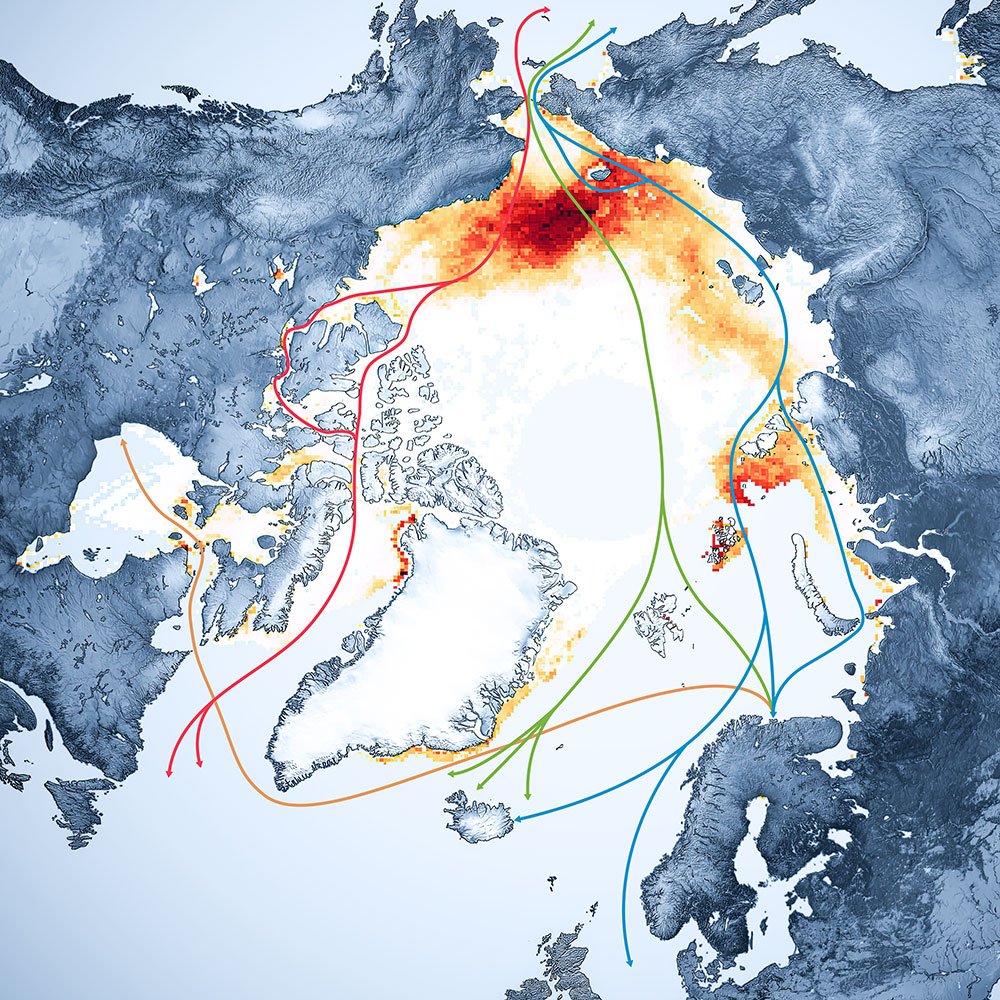
Arctic Shipping Routes: Transpolar Route (TPR) – Northern Sea Route (NSR) – Northwest Passage (NWP)
The Transpolar Route (TPR) is an emerging Arctic shipping corridor running across the central Arctic Ocean and over the North Pole. The TPR has the potential to outperform traditional routes and reshape global trade by providing the most direct path between major economic centers in North America, Europe, and Asia.
Time and Distance Reduction
The TPR’s strategic value lies in its ability to significantly reduce the time and distance required for intercontinental shipping. Presently, cargo vessels must travel along longer, circuitous paths to connect key markets across oceans. The Transpolar Route shortens this journey by thousands of kilometers, shaving off days of travel time. These efficiency gains allow for quicker delivery of goods, potentially increasing the number of voyages a vessel can make annually and improving overall fleet utilization.
Fuel Efficiency and Cost Savings
With shorter distances come lower fuel requirements. Ships traveling the TPR would consume less fuel, offering substantial cost savings and reduced emissions. As the shipping industry faces growing pressure to meet international climate goals, the route’s improved fuel efficiency could provide a dual advantage—economic benefit and environmental alignment. Lower fuel use also translates into a smaller carbon footprint, contributing to global efforts to decarbonize maritime transport.
Climate Change and Ice Conditions
The feasibility of the Transpolar Route is closely tied to ongoing changes in the Arctic climate. In 2020, Arctic sea ice retreated to the second-lowest extent on record. Satellite data spanning over four decades shows a consistent decline in sea ice—melting begins earlier in spring, and freeze-up occurs later in autumn. On average, sea ice is now forming nearly a month later than it did in 1979.
This trend is largely driven by the ice-albedo feedback: as sea ice melts, it exposes darker ocean surfaces that absorb more solar energy, further delaying ice formation and reinforcing the warming cycle. In addition to shrinking in area, the ice is getting younger and thinner. Where multi-year, thicker ice once dominated, the Arctic is now largely covered by first-year ice, which forms in winter and melts each summer. This fragile, seasonal ice is more susceptible to warming and break-up.
As a result, Arctic sea lanes are becoming more accessible. In 2020, ships were able to navigate the Northern Sea Route (NSR) with minimal ice resistance—and even reached the North Pole. The Transpolar Route, running farther offshore and through international waters, may see increased seasonal viability as warming trends continue. While the TPR is currently usable only during the summer, projections suggest longer navigable periods in the coming decades, with the potential for late-summer or even shoulder-season operations by mid-century.
Geopolitical Implications
The Transpolar Route not only presents logistical and environmental challenges but also introduces geopolitical complexities. As the route runs through international waters beyond national Exclusive Economic Zones (EEZs), it is subject to global maritime governance rather than any single nation’s control. However, Arctic states—such as Russia, Canada, and the United States—may still seek to exert influence over adjacent Arctic waters. Non-Arctic countries, including China, have also expressed strategic interest in the TPR, particularly as part of broader initiatives like the “Polar Silk Road.”
These dynamics may prompt new international discussions and agreements concerning transit rights, shipping regulations, and environmental standards, reshaping maritime diplomacy in the Arctic region.
Environmental and Operational Challenges
Despite its promise, the TPR is not without risks. The Arctic remains one of the harshest and least predictable environments on Earth. Sudden weather shifts, residual ice hazards, and limited search-and-rescue infrastructure all complicate Arctic navigation. Ships operating along the route must be ice-strengthened or accompanied by icebreakers, which adds to operational costs.
Moreover, increased shipping poses threats to fragile polar ecosystems. The potential for oil spills, black carbon emissions, noise pollution, and wildlife disturbance is a serious concern. Any expansion of Arctic maritime traffic would require robust environmental safeguards and stringent oversight to mitigate ecological damage.
The Future of the Transpolar Route
The future of the Transpolar Route will depend on a confluence of factors: continued Arctic warming, advancements in vessel design and ice-navigation capabilities, and the development of international regulatory frameworks. While not yet a mainstream shipping corridor, the TPR holds substantial strategic and economic potential. If climate trends continue and policy frameworks evolve to support safe, sustainable passage, the TPR could become a vital component of the global shipping network—redefining trade patterns and economic relationships across the Northern Hemisphere.
Economic Opportunities in the Arctic
Beyond the emerging trade routes opened by melting sea ice, the Arctic presents a range of significant economic opportunities. These include untapped natural resources, such as oil, gas, and minerals, as well as growing potential in sustainable fisheries, renewable energy, and Arctic tourism. As global interest intensifies, the region is drawing attention from businesses and investors aiming to access new markets, forge strategic partnerships, and participate in the long-term development of this frontier economy.
Shipping and Transportation
The Arctic’s emerging trade corridors—such as the Northern Sea Route and the Northwest Passage—are reshaping global shipping dynamics and driving demand for specialized maritime infrastructure. This includes the development and deployment of ice-class vessels, resilient port facilities, and sophisticated logistics systems tailored to extreme Arctic conditions.
Companies investing in Arctic shipping are strategically positioning themselves to benefit from significantly reduced transit times between key markets in Asia, Europe, and North America. As polar routes become more viable due to diminishing sea ice, these firms stand to gain a competitive edge in global trade, while contributing to the evolution of a new era in maritime transportation.

Energy Projects
Despite the complex regulatory landscape and heightened environmental scrutiny, the Arctic remains a region of considerable interest for energy development. Areas with proven reserves continue to attract investment in oil and gas extraction, driven by global demand and advancements in extraction technologies.
In parallel, supporting sectors—such as transportation, storage, and pipeline infrastructure—present additional avenues for growth, particularly as logistics and supply chains evolve to meet the challenges of remote and harsh Arctic conditions. For energy companies and investors with long-term vision, the Arctic offers a strategic opportunity to tap into underutilized resources while shaping the future of high-latitude energy markets.
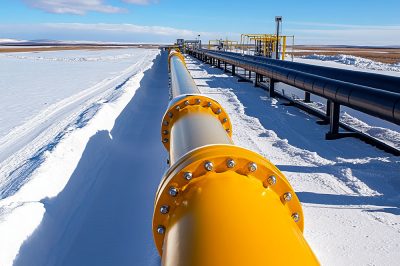
Tourism
Arctic tourism is experiencing steady growth as more travelers are drawn to the region’s dramatic landscapes, rare wildlife, and rich Indigenous cultural heritage. This surge in interest is creating demand for enhanced tourism infrastructure, including specialized cruise operations, eco-friendly accommodations, and reliable transportation services capable of withstanding extreme conditions.
As the appeal of remote and experiential travel expands globally, strategic investment in Arctic tourism can unlock significant returns while supporting sustainable development and community engagement in this distinctive niche market.

Infrastructure Development
Developing robust infrastructure is essential to unlocking the Arctic’s economic potential. Key assets—such as deep-water ports, all-season airports, and resilient telecommunications networks—form the backbone of sustainable growth in the region.
Strategic investments in these areas will not only facilitate trade and improve connectivity but also empower local communities, support business operations, and attract additional private and public sector development. As Arctic activity intensifies, modern and adaptive infrastructure will be a critical enabler of long-term prosperity and resilience.

Port Modernization
As Arctic shipping routes grow more active, the region’s ports face mounting pressure to modernize in order to meet the demands of increased maritime traffic. The expansion of these northern corridors will require a new generation of port infrastructure—capable of operating reliably in extreme weather conditions and supporting larger, more frequent vessel traffic.
Upgrading facilities along key trade routes will be essential for efficient cargo handling, secure storage, and multi-season operations. Strategic investment in advanced port systems not only enhances local and regional connectivity but also strengthens the Arctic’s role in global logistics. Modernized ports will serve as critical gateways, positioning Arctic hubs as competitive, resilient nodes in the evolving architecture of international trade.
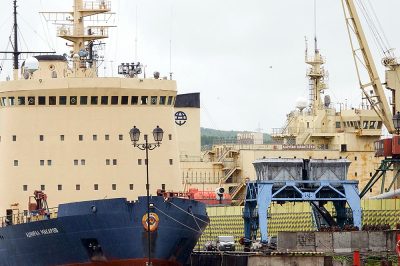
Investing in the Arctic with Opportunities and Challenges
The Arctic’s economic potential is drawing increasing attention from investors seeking opportunities in shipping, infrastructure, and energy. As the region continues to evolve with the effects of climate change, new avenues are opening for growth and development, particularly in logistics, tourism, and infrastructure. However, the Arctic’s unique characteristics require careful consideration to successfully tap into these opportunities. Below, we’ll explore how investors can engage with the Arctic’s evolving landscape, offering a promising and dynamic future for those involved.
Opportunities in Shipping and Logistics Investments
One of the most exciting areas for investment in the Arctic is the development of shipping and logistics infrastructure. The opening of new Arctic shipping routes, such as the Northern Sea Route, the Northwest Passage, and the potential for a Transpolar Route, presents tremendous opportunities for those in the maritime industry. These routes promise to reduce shipping distances and transit times significantly, creating a more efficient global shipping network. By cutting down on the distance between major economic hubs, particularly between North America, Europe, and Asia, the Arctic becomes a strategic route for international trade.
Investors can look to capitalize on this shift by supporting the growth of specialized infrastructure to facilitate Arctic shipping. This includes the development of ice-resistant vessels, icebreakers, and advanced port facilities designed to handle the harsh Arctic environment. In addition, specialized logistics hubs will be needed to support the growth of Arctic trade, offering a wealth of opportunities for investment in both the private and public sectors.
The growth of Arctic shipping also opens the door to logistics investments in related industries such as supply chain management, warehousing, and transportation. The ability to move goods more efficiently across the Arctic region means faster and cheaper deliveries, which is an attractive proposition for businesses across multiple sectors.
Exciting Opportunities in Tourism Ventures
The Arctic’s unique landscapes and wildlife are also positioning the region as a growing destination for tourism, making it an exciting area for investment. As the Arctic becomes more accessible, there has been a surge in demand for Arctic cruises, polar expeditions, and eco-tourism experiences. Tourists are increasingly seeking adventures that bring them closer to nature, offering opportunities to explore pristine, unspoiled environments and observe rare wildlife in their natural habitats.
Investors in tourism ventures have the potential to develop luxury cruises, adventure tourism packages, and even sustainable eco-lodges in Arctic destinations. With a growing global interest in environmental sustainability, there’s a notable push for eco-friendly tourism options that minimize human impact on the region. The Arctic offers a rare opportunity to capitalize on the growing market for sustainable tourism that allows visitors to experience the natural beauty of the region while preserving it for future generations.
In addition to adventure tourism, the Arctic’s cultural heritage, indigenous communities, and historical landmarks present unique opportunities for cultural tourism investments. As more people look to experience the untouched beauty and learn about the local way of life, tourism ventures that combine education with eco-conscious travel are likely to thrive.
Infrastructure Growth: Building the Arctic’s Future
As the Arctic becomes an increasingly vital region for trade, tourism, and energy development, there is a significant need for infrastructure growth. Developing the infrastructure to support Arctic industries will be key to unlocking the region’s full economic potential. This includes not only port facilities and transportation networks but also communication and energy infrastructure that can withstand the region’s extreme conditions.
Infrastructure investments could involve constructing ports that can handle ice-breaking vessels, building roads, airports, and rail networks to connect Arctic communities, and setting up power grids and renewable energy solutions tailored to Arctic conditions. The establishment of research and development hubs in the Arctic could also attract international investment in technological advancements, particularly in areas like sustainable energy, environmental monitoring, and climate research.
Additionally, the region will need robust search-and-rescue capabilities, environmental monitoring systems, and emergency services to support the growing commercial and tourism activities. The combination of public-private partnerships and international cooperation will be critical for ensuring the successful development of Arctic infrastructure. This infrastructure growth is essential for supporting not only the existing industries but also the region’s long-term sustainability.
Energy and Resource Extraction
Beyond shipping, logistics, and tourism, the Arctic’s vast energy and mineral resources present exciting investment opportunities. The region is known to contain some of the world’s largest untapped reserves of oil, natural gas, and valuable minerals. As global energy demands increase, investors in the energy sector are looking to capitalize on the region’s potential for resource extraction.
While energy exploration in the Arctic presents substantial opportunities, it also requires advanced technology to overcome environmental challenges, such as permafrost, ice conditions, and harsh weather. Successful investment in Arctic energy exploration will depend on technological innovation and the implementation of strict environmental protection measures.
Challenges of Investing in the Arctic
While the Arctic presents vast opportunities for investment, it also comes with unique challenges. The region’s extreme weather, unpredictable ice conditions, and remote location make operating in the Arctic particularly complex. Specialized equipment and vessels are required to navigate and operate in the harsh conditions, and seasonal access limits operations to only part of the year.
Moreover, the Arctic’s fragile ecosystem and the need for careful environmental management add layers of complexity to any investment. Public pressure and regulatory frameworks aimed at reducing carbon emissions are also factors that investors must consider when planning projects in the region.
Additionally, geopolitical tensions over territorial claims in the Arctic and the establishment of international governance structures will impact how resources and trade routes are managed. Investors must be prepared to navigate these complexities with a strategic and adaptable approach.
The Arctic is a region of untapped economic potential that presents exciting opportunities for investors across shipping, infrastructure, tourism, and energy sectors. As the region becomes more accessible due to climate change and technological advancements, there is an increasing interest in building the infrastructure and services needed to support a growing Arctic economy. While there are challenges to overcome, including environmental considerations, geopolitical tensions, and extreme operational conditions, the rewards are significant for those who can adapt to the region’s unique environment. With careful planning and sustainable development, the Arctic could emerge as a key driver of global trade, energy, and tourism in the years to come.
